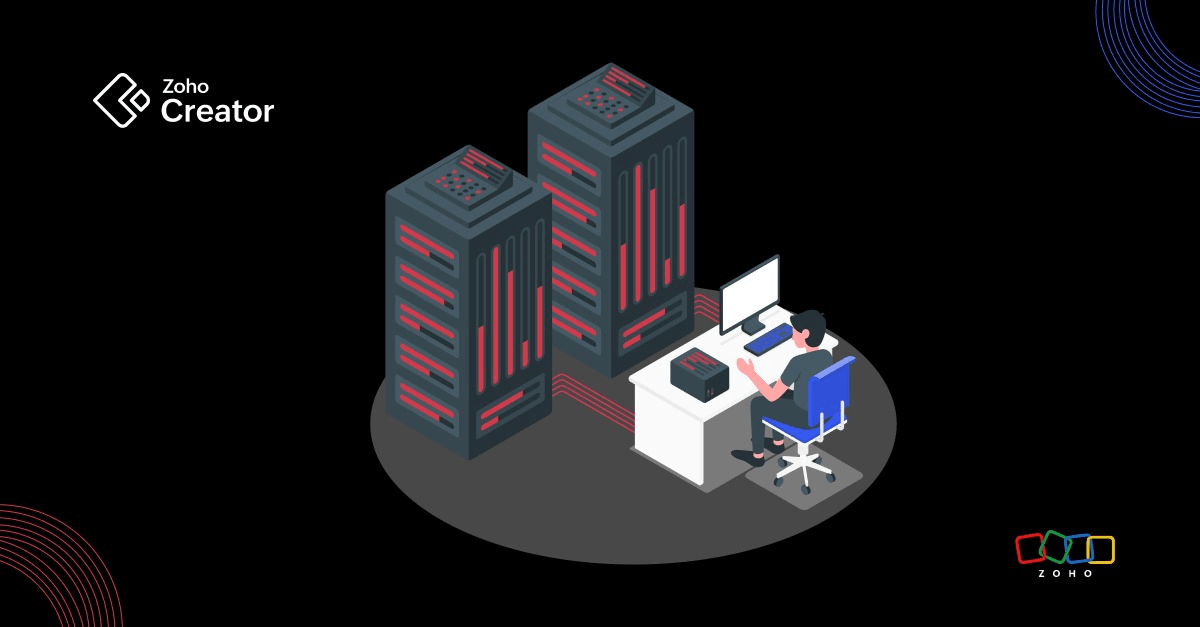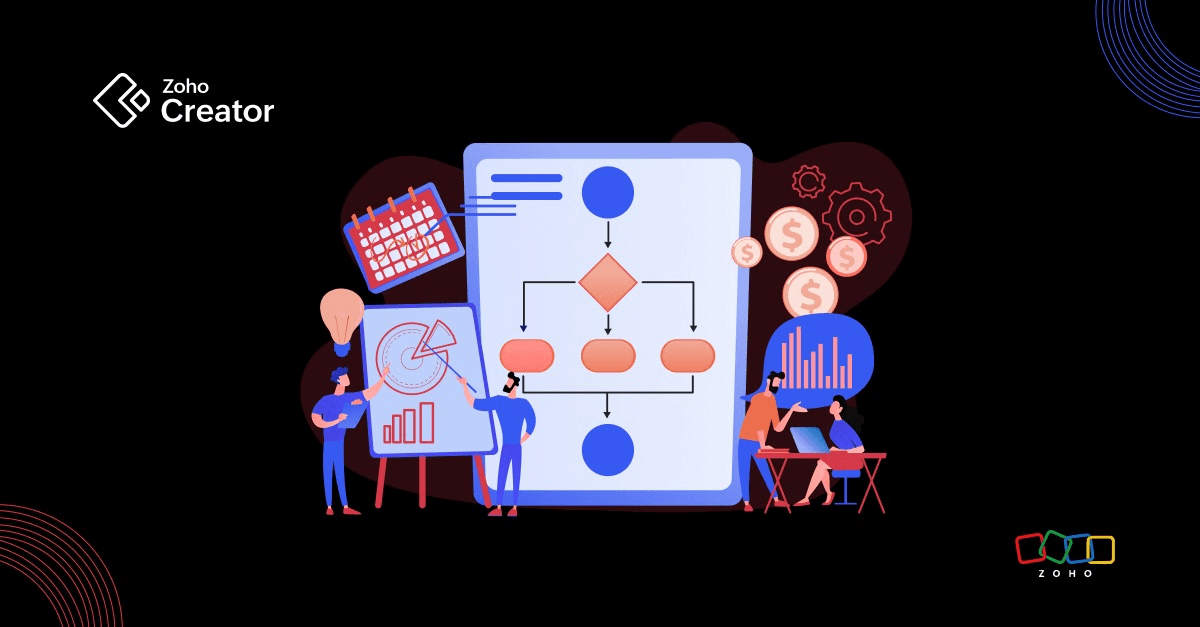- HOME
- Know Your Tech
- Why no-code developers are the future game changers of the tech world?
Why no-code developers are the future game changers of the tech world?
- Last Updated : February 22, 2024
- 612 Views
- 7 Min Read
Unlike years ago, traditional coding is no longer the only path to software development. With the rise of no-code development—a game-changing trend that's shaping the future of the industry—individuals with little to no coding experience can now create fully functional applications, websites, and software solutions.
This has increased the demand for no-code developers, as businesses recognize the benefits of using no-code tools to provide this innovative approach. With no-code, the barrier to entry into the world of software development is significantly lowered, empowering more people to bring their ideas to life.
What is no-code development?
No-code development is a method of creating or developing applications without the need for traditional programming languages. It aids individuals with little to no coding experience in building functional and complex applications with the help of intuitive visual interfaces. These platforms provide a range of prebuilt components, templates, and drag-and-drop features that make it easy for users to create applications without writing any code.
No-code development is often compared to low-code development, which also aims to simplify the software development process. However, the key difference is that no-code development requires no coding skills at all, while low-code development still requires some level of coding knowledge. No-code development is ideal for individuals who want to create applications quickly and efficiently, without the need to learn programming languages or rely on developers to write code themselves.
The advantages of no-code development

No-code development offers several advantages over traditional coding methods:
Accessibility: No-code development platforms lower the barrier to entry into software development, making it accessible to individuals without a technical background. This opens up opportunities for entrepreneurs, designers, and professionals from various fields to create their own applications and bring their ideas to life.
Speed: No-code development allows for rapid application development. With prebuilt components and drag-and-drop interfaces, developers can create functional prototypes and iterate on their designs quickly. This enables businesses to bring their solutions to market faster and stay ahead of the competition.
Cost-efficiency: By eliminating the need for traditional coding expertise, no-code development significantly reduces app development costs. Businesses can save on hiring dedicated developers or outsourcing development work, as individuals within the organization can create applications themselves. This makes it particularly appealing for startups and small businesses with limited resources.
Empowerment: No-code development empowers individuals to take control of their own projects. It eliminates the need to rely on developers for every small change or update, allowing entrepreneurs and professionals to make modifications to their applications independently. This level of control and flexibility can lead to faster innovation and better alignment with business goals.
Collaboration: No-code development platforms often come with features that enable collaboration and teamwork. Multiple users can work on the same application simultaneously, making it easier to share ideas, gather feedback, and work together towards a common goal. This fosters a collaborative environment and promotes creativity and innovation.
The rise of no-code development in the tech industry
No-code application development has gained significant recognition in the tech industry, with more businesses understanding its potential. Startups, in particular, have embraced no-code development as a way to build apps and iterate on their product ideas quickly. No-code development platforms have made it possible for non-technical founders to bring their visions to life without the need for extensive coding knowledge or hiring costly developers.
Established companies are also adopting no-code development to streamline their processes and create internal applications. These platforms provide the flexibility and speed necessary to make software applications and develop custom solutions tailored to specific business needs. This allows companies to automate workflows, improve efficiency, and reduce reliance on off-the-shelf software solutions.
No-code app development has also led to the emergence of a new wave of entrepreneurs and startups. Non-technical individuals who have a great idea for an application can now turn it into a reality without the need for coding knowledge. This democratization of software development has opened up opportunities for innovation and disruption across industries.
No-code development tools and platforms
There are several different no-code development platforms available that cater to a range of use cases and skill levels. These platforms provide intuitive interfaces and a range of features to simplify the development process, with drag-and-drop functionality being a major differentiator. Some popular no-code development tools include:
Bubble: Bubble is a no-code development platform that allows users to build fully functional web applications without writing code. It offers a visual interface for designing user interfaces and a powerful backend for building complex logic and workflows.
Zoho Creator: Zoho Creator serves as a versatile application development platform, incorporating both low-code and no-code capabilities. Its user-friendly visual development environment empowers individuals without coding skills to effortlessly create customized applications. Additionally, Creator provides a variety of prebuilt templates, allowing users to easily install and deploy for immediate use.
Adalo: Adalo is a no-code platform specifically designed for building applications for mobile devices. It provides a drag-and-drop interface for designing app screens and a visual builder for creating complex app logic and data structures.
OutSystems: OutSystems is a low-code development platform that also offers a no-code development option. It provides a range of prebuilt components and templates, as well as advanced features for building complex applications without writing code.
These are just a few examples of the many no-code development tools and platforms available, and the choice of platform depends on the specific requirements and goals of the project.
Challenges and limitations of no-code development
While no-code development offers many advantages, it also has its challenges and limitations. Some common challenges with no-code technologies include:
Complexity limitations: Adopting no-code may not be suitable for extremely complex or highly specialized applications that require custom coding. In such cases, traditional coding methods may still be necessary.
Customization constraints: No-code development platforms provide prebuilt components and templates, which can limit the level of customization possible. Users may encounter limitations when trying to implement unique or highly specific design or functionality requirements.
Learning curve: Although no-code development platforms aim to simplify the development process, there is still a learning curve involved. Users need to familiarize themselves with the platform's features and capabilities, which requires time and effort.
Dependency on platform providers: Users of no-code development platforms rely on the platform provider for ongoing support, updates, and maintenance. If the platform is discontinued or undergoes significant changes, it can disrupt existing applications and workflows.
Recognizing these challenges and limitations is important when considering whether to adopt no-code development for a particular project.
How to get started with no-code development?
Getting started with no-code development is relatively simple, even for individuals with no prior coding experience. Here are some steps to help you get started:
Identify your goals: Determine what you want to achieve with your application. Understand the problem you're trying to solve and the target audience you want to reach. This will help you choose the right no-code development platform and guide your design and development process.
Choose a no-code development platform: Research and evaluate different no-code development platforms based on your requirements. Consider factors such as ease of use, available features, pricing, and community support. Sign up for a free trial or demo to test out the platform and see if it meets your needs.
Learn the basics: Familiarize yourself with the platform's interface and features. Most no-code development platforms provide tutorials, documentation, and community forums to help you get started. Take advantage of these resources to learn the basics of building applications using the platform.
Start small: Begin by building simple applications or prototypes to get a feel for the platform. Experiment with different components and features to understand how they work. As you gain confidence and experience, you can gradually tackle more complex projects.
Join the community: Engage with other no-code developers in online forums, social media groups, and community events. Learn from their experiences, ask questions, and share your own insights. Building connections within the no-code community can provide valuable support and inspiration.
Resources and communities for no-code developers
There are many resources and communities available for individuals interested in learning more about no-code development and connecting with like-minded individuals. Some popular resources include:
NoCode Devs: NoCode Devs is an online community for no-code developers. It provides a platform for sharing knowledge, asking questions, and showcasing projects. The community also hosts regular webinars and events to facilitate learning and networking.
Makerpad: Makerpad is a no-code education platform that offers tutorials, courses, and templates for various no-code development platforms. It provides a comprehensive learning resource for individuals looking to improve their no-code skills.
NoCode.tech: NoCode.tech is a curated directory of no-code tools and resources. It provides a comprehensive list of platforms, tutorials, communities, and inspiration for individuals interested in exploring the world of no-code development.
These resources can help beginners get started with no-code development and provide ongoing support, as individuals progress in their no-code app learning journey.
The future is no-code
The rise of no-code development has opened up a world of opportunities for entrepreneurs, designers, citizen developers, and professionals from various fields. With its accessibility, speed, and cost-efficiency, no-code development is set to shape the future of technology.
As businesses strive to stay competitive and streamline their processes, organizations can adopt no-code technology to offer a viable alternative to traditional coding methods. It provides endless possibilities for innovation and disruption for business users, allowing individuals to bring their ideas to life and solve business challenges without relying on traditional coding expertise.
The future of software development lies in the hands of no-code developers—the game changers who are shaping the future of the industry. With the right tools, resources, and communities, individuals can embark on their no-code development journey and be part of this transformative movement.
 Ashwin Raj S N
Ashwin Raj S NAshwin is a Growth Marketer for Zoho, with a passion for learning new things. In his spare time, he enjoys spending time with his family and friends, watching anime, and travelling.



